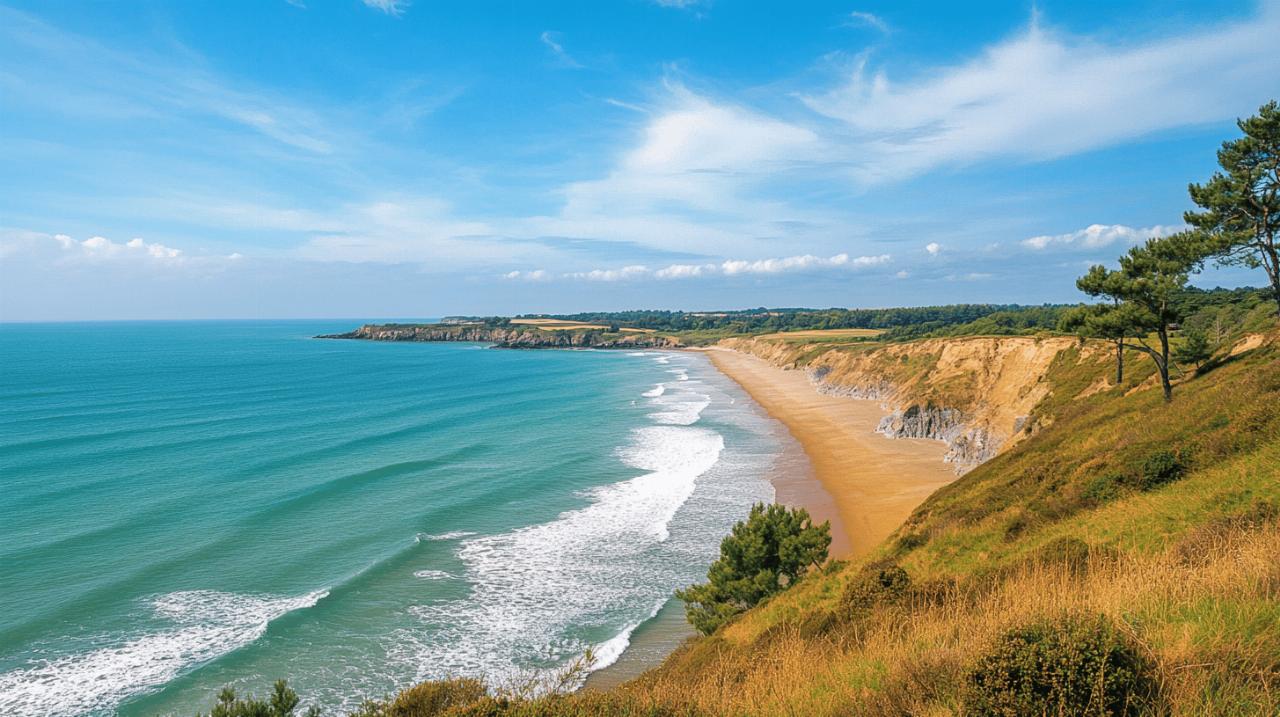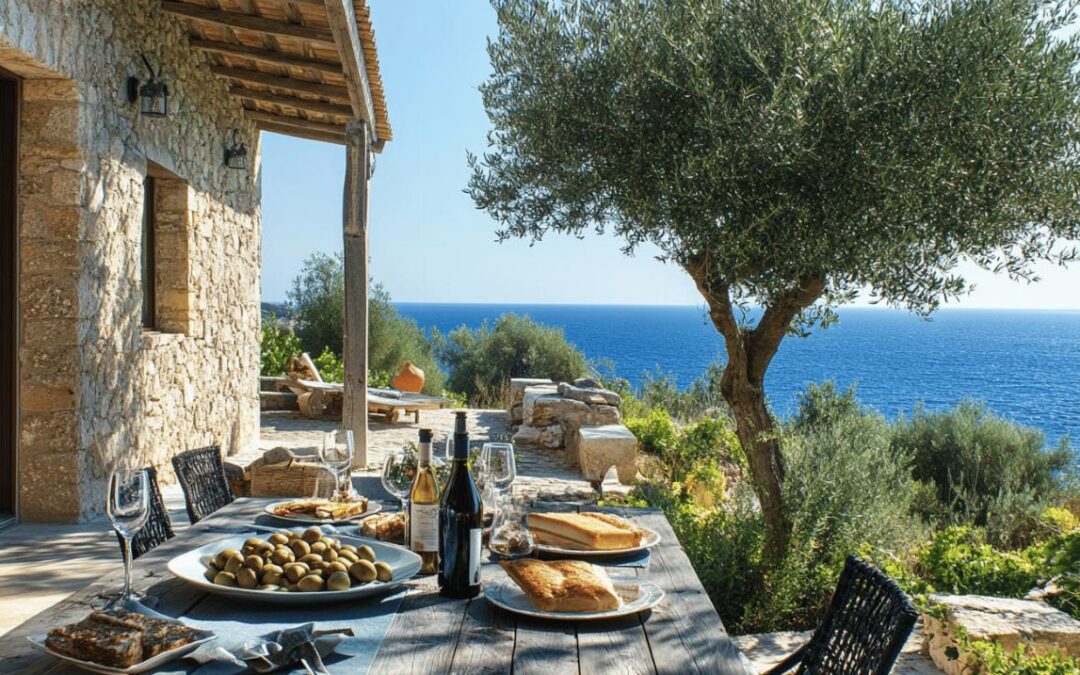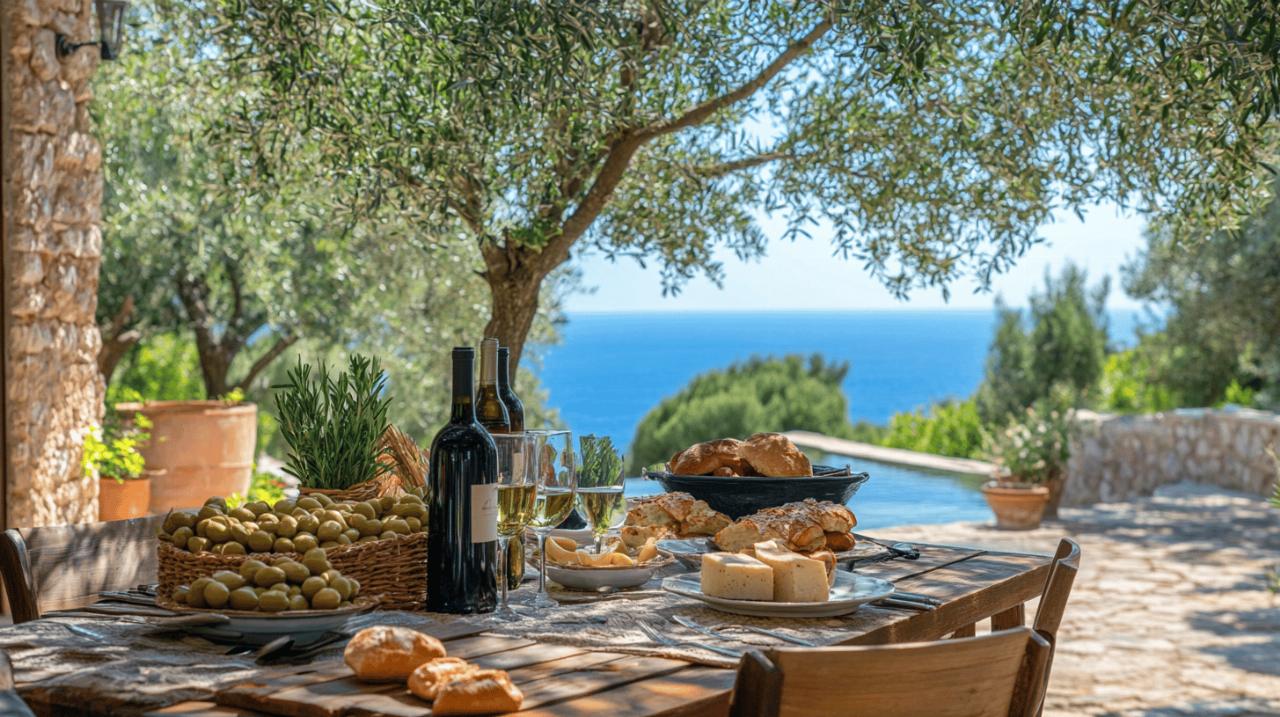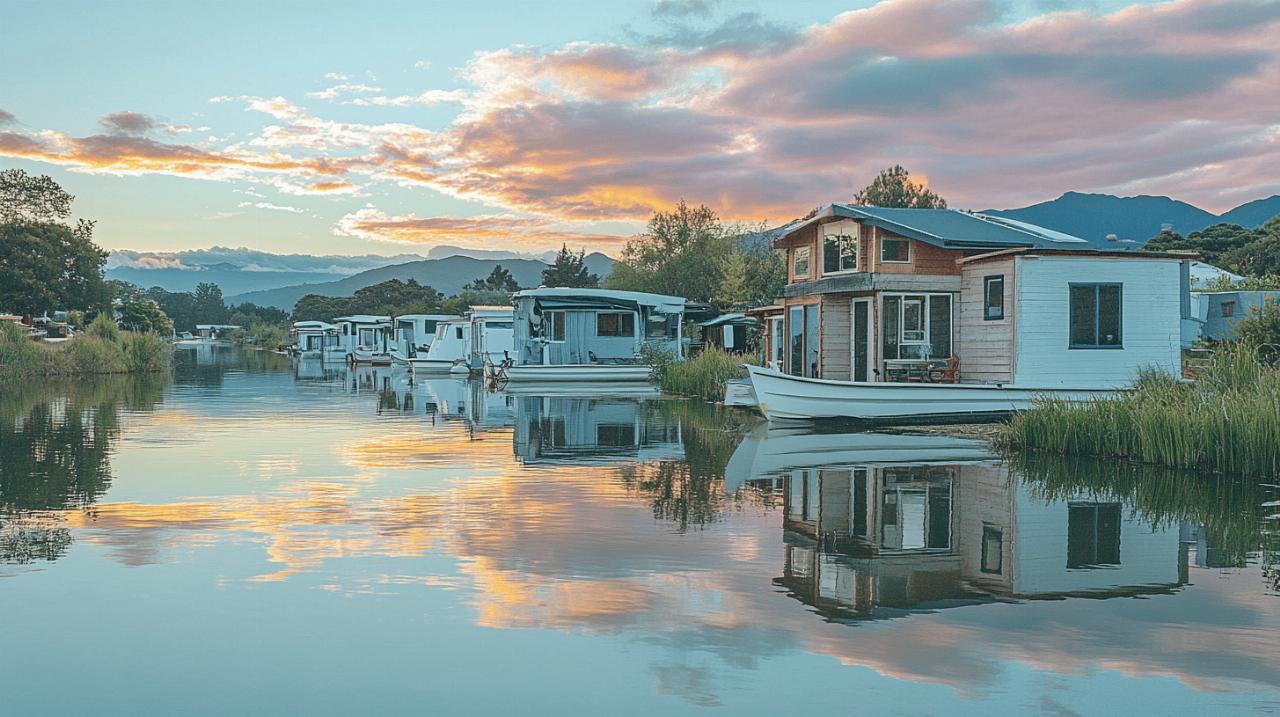
by cafe-eilat | Aug 29, 2025 | Equipment
Welcome to the captivating world of Vendée hiking, where diverse landscapes meet adventurous spirits. Whether you’re an experienced rambler or a casual nature lover, this western French region offers spectacular trails that showcase both coastal beauty and inland charm. The following guide reveals some of Vendée’s most treasured walking routes, perfect for your next outdoor expedition in this remarkable part of France.
Discovering the Coastal Paths of Vendée
The Atlantic coastline of Vendée presents some of France’s most breathtaking walking opportunities. Outdoor enthusiasts seeking maritime adventures will find their paradise along the renowned GR8 coastal trail, which stretches an impressive 221 kilometers along the Vendée shore. This magnificent route captures the essence of French coastal hiking, with endless ocean views that change with every bend in the path. Many experienced hikers consider this trail a must-visit destination, as documented in various outdoor activity guides including those featured on hiking websites like https://www.camminasicilia.it/ which highlights exceptional European hiking circuits including those in Vendée.
The stunning Sentier du Littoral along the Atlantic shores
The Sentier du Littoral represents the quintessential Vendée hiking experience, offering varied terrain and spectacular vistas. Walking these paths provides intimate access to the region’s maritime character, with stretches that hug dramatic cliff edges and others that meander through protected dunes. South Vendée particularly excels with its cliff-top trails that reward ramblers with panoramic sea views stretching toward the horizon. These elevated paths capture the wild beauty of the Atlantic coast while providing excellent vantage points for spotting seabirds and watching the powerful waves shape the shoreline below.
Hidden coves and fishing villages along the coastal routes
Beyond the main GR8 trail, Vendée offers enchanting island adventures for those willing to venture offshore. The Isle of Yeu features the GR80 trail, approximately 30 kilometers of pathways circling this charming island. This circuit takes walkers past lighthouses, ancient ruins, and secluded beaches that feel worlds away from mainland France. Similarly, Noirmoutier-en-l’Île delights visitors with five themed walks that showcase the island’s unique maritime heritage and salt harvesting traditions. These coastal routes connect traditional fishing hamlets where colorful boats bob in natural harbors, and local seafood restaurants serve the day’s catch to appreciative hikers.
Venturing through vendée’s lush marshlands
Moving inland from the coast, Vendée reveals a completely different landscape character through its extensive marshlands. The region boasts two significant marsh areas that provide distinctive walking experiences: Marais Breton Vendéen in the north and Marais Poitevin to the south. These wetland environments offer flat, tranquil trails ideal for leisurely family hikes or educational walks focused on ecology. The GR364 trail complements the coastal GR8 by taking ramblers through these interior landscapes, connecting with hundreds of kilometers of woodland paths where seasonal hiking rewards visitors with changing natural displays throughout the year.
Navigating the tranquil waterways of Marais Poitevin
Often referred to as ‘Green Venice,’ the Marais Poitevin presents a network of canals and waterways bordered by towpaths perfect for walking. These serene routes take hikers through a labyrinth of water channels lined with ash trees and poplars, creating green tunnels that provide welcome shade during summer months. For those seeking shorter, family-friendly options, routes like Le P’tit Val Gaillard (3.2 km) or The washhouse path (3.4 km) offer accessible introductions to marsh landscapes. More ambitious ramblers might tackle champion hikes such as Between banks and heights (20 km) or The Celts Trail (15.2 km), which showcase the diversity of the marsh environment.
Wildlife spotting opportunities in the ‘Green Venice’
The marsh ecosystems of Vendée provide exceptional wildlife viewing possibilities for nature enthusiasts. Spring transforms these wetlands into a vibrant habitat filled with wildflowers and migratory birds, making it a premium season for wildlife-focused hikes. Dedicated educational trails like The path of the ponds guide walkers through these rich habitats with informative signage explaining the delicate ecology. Visitors interested in enhancing their nature experiences can utilize the Baludik app, which offers interactive walks with wildlife identification features. The wetlands support diverse animal populations, from amphibians in the shallow waters to raptors soaring overhead, creating a dynamic environment that changes with each season.
Beyond traditional hiking, Vendée caters to varied outdoor preferences with 4 signposted mountain biking routes ranging from moderate 12-kilometer blue trails to challenging 58-kilometer red routes. Equestrian enthusiasts can explore three dedicated horse riding circuits developed by the Departmental Equestrian Tourism Committee, including a scenic 28-kilometer route from Saint-Georges-de-Pointindoux. For those planning extended stays, the Vendée Hiking Guide 2023 proves invaluable, featuring 58 trails with 23 specially marked ‘favourites’ to help visitors navigate the wealth of options available in this outdoor paradise.

by cafe-eilat | Aug 29, 2025 | Equipment
Investing in a high-quality motorcycle cover is an essential step for any bike owner looking to protect their prized possession from the elements. Whether you’re storing your motorcycle outdoors or in a garage, the right cover can significantly extend your bike’s lifespan by shielding it from various environmental factors. This comprehensive guide will walk you through the key considerations when selecting the perfect motorcycle cover to meet your specific needs.
Material selection for maximum protection
When browsing through options at retailers like SportsBikeShop or visiting https://www.kammann-automobile.de/for accessories, material quality should be your primary concern. Premium covers like the Oxford Stormex, priced at around £60, offer exceptional protection due to their robust construction. The materials used directly impact how effectively your motorcycle will be protected against rain, snow, UV rays, and other potential damage sources.
Durability and weatherproofing features
The most effective motorcycle covers feature multiple layers of weatherproof materials that create an impenetrable barrier against moisture. Avoid makeshift solutions like tarpaulins or plastic sheets, as these can actually damage your paintwork by flapping in strong winds and lack proper securing mechanisms. Instead, look for covers specifically designed for motorcycles with reinforced stitching at stress points and water-resistant coatings that maintain their effectiveness over time.
Breathability to prevent moisture buildup
One often overlooked aspect of quality covers is proper ventilation. Non-breathable materials trap moisture underneath, creating the perfect environment for rust and mould to develop. Covers like the Oxford Aquatex, available for under £20, incorporate ventilation panels that allow air circulation while still maintaining waterproof properties. This balance between protection and breathability is crucial for bikes stored for extended periods, especially in humid or changing climates.
Finding the perfect fit for your motorcycle
A universal-sized cover rarely provides optimal protection. Each motorcycle model has unique dimensions, and ill-fitting covers can lead to inadequate protection or wind damage. The difference between a generic cover and one designed for your specific bike type can be substantial, particularly for larger adventure bikes or those with accessories like topboxes.
Measuring your bike for proper cover dimensions
Before purchasing, take precise measurements of your motorcycle, including length, width, and height. Consider any additional accessories that might affect these dimensions. Many quality covers from brands like MotoGP or R&G Adventure are designed with specific bike categories in mind. The R&G Adventure cover, priced at approximately £58, is particularly well-suited for larger motorcycles with its oversized dimensions ensuring complete coverage.
Securing mechanisms to prevent wind damage
Even the best-fitting cover can become a liability in windy conditions without proper securing mechanisms. Look for features like elasticated hems, adjustable straps, and undercarriage straps that pass beneath the motorcycle. These elements ensure the cover stays in place during adverse weather, preventing it from acting like a sail or rubbing against your paintwork. The BikeIt Heavy Duty Rain Cover, available for around £22, offers excellent securing features despite its affordable price point.
Security considerations for theft prevention
A quality motorcycle cover does more than just protect against the elements—it can also serve as a deterrent to potential thieves. By concealing your bike from view, you remove the temptation that visible high-value motorcycles present. However, some covers go further by incorporating specific security features.
Lockable cover systems and reinforced eyelets
Advanced covers include reinforced eyelets that allow you to pass security chains through them, effectively securing both your motorcycle and its protective cover. This integrated approach enhances your overall security strategy. When shopping for security-focused covers, look for those with robust metal grommets rather than plastic alternatives that can easily be cut or broken.
Visibility deterrents and alarm integration
Some premium motorcycle covers feature reflective elements that increase visibility at night for safety purposes while still concealing the exact model underneath. More sophisticated options even include pockets or attachment points for alarm systems. However, avoid covers with prominent branding or stickers that might indicate a valuable motorcycle beneath, as this could counter the disguising benefit the cover provides.
Practical features for everyday use
The most protective cover becomes a burden if it’s too cumbersome to use regularly. Practical features that make daily use convenient will encourage consistent usage, maximizing the protection benefits over time.
Quick on/off design elements
Features like color-coded markings for front and rear sections help with correct orientation during installation. Covers from respected brands like Oxford typically include these user-friendly elements. Consider how frequently you’ll be using your motorcycle when selecting a cover—those requiring daily access might prioritize ease of use over absolute weatherproofing.
Storage solutions when cover isn’t in use
Quality covers often come with storage bags that keep them compact and clean when not in use. This seemingly minor feature becomes significant for riders with limited storage space or those who travel with their covers. The MotoGP cover, currently discounted to around £23, includes a convenient storage solution despite its affordable price point, making it particularly popular among sports bike owners.
Protecting against environmental damage
Different environmental factors pose unique threats to your motorcycle, from UV radiation fading your paintwork to heat damage from recently-used engines. A comprehensive protection strategy addresses all these potential issues.
UV protection for paintwork preservation
Extended exposure to sunlight causes paintwork to fade and plastics to become brittle. Premium covers incorporate UV-resistant materials that block these harmful rays. The Oxford Stormex, with its impressive 4.8/5 rating from over 1000 reviews, excels in this area, offering superior UV protection compared to budget alternatives.
Heat resistance for post-ride coverage
If you typically cover your motorcycle shortly after riding, heat resistance becomes crucial. Standard covers can melt or warp when placed over hot exhausts or engines. Quality options feature heat-resistant panels in critical areas, allowing you to protect your bike without waiting for it to cool completely. This feature is particularly valuable for commuters who need to cover their bikes immediately after arriving at their destination.

by cafe-eilat | Aug 27, 2025 | Equipment
Construction sites are inherently hazardous environments where clear communication can make the difference between safety and serious incidents. Effective signage serves as a critical tool for managing these risks, guiding workers and visitors alike. Well-designed construction site signs not only fulfil legal obligations but also protect everyone on site by clearly communicating potential dangers and required actions. This comprehensive guide explores how to create impactful construction signage that enhances safety and compliance.
Creating clear and legible signage
The foundation of effective construction site signage lies in its legibility. Even the most important safety message becomes worthless if people cannot read or comprehend it quickly. Professional sign designers recommend using straightforward typefaces such as Arial or Helvetica that maintain clarity even when viewed from a distance. Text size matters tremendously—letters should be large enough to read from the intended viewing distance, with a general rule of 25mm letter height for every 7.5 metres of viewing distance. Many construction managers find resources and guidance at https://www.criterioselecta.it/ when researching best practices for their signage solutions across various construction applications.
Selecting the Right Typefaces and Font Sizes
Font selection significantly impacts how quickly information can be processed by viewers. Sans-serif fonts generally offer superior legibility for safety signage compared to decorative or script typefaces. The construction industry standard leans toward bold, clean fonts that remain readable in varying weather and lighting conditions. Experts recommend maintaining consistent typography throughout all site signage to establish visual continuity that helps workers quickly recognise and process safety information without unnecessary cognitive effort.
Balancing text and visual elements
Effective construction signs strike the right balance between textual information and visual elements. Industry best practices suggest limiting text to just 3-5 words whenever possible, focusing on the essential message. This approach prevents cognitive overload, allowing for quicker comprehension, particularly in emergency situations. Visual hierarchy should guide the viewer’s attention to the most critical information first, with secondary details presented in a logical flow. White space serves as an often-overlooked design element—construction signage professionals recommend maintaining 30-40% empty space to enhance readability and prevent visual clutter.
Optimising visibility and placement
Even the most well-designed sign fails if it cannot be seen. Strategic placement and visibility considerations should drive decisions about where to position construction signage for maximum effectiveness. Signs should be mounted at eye level whenever possible, typically between 1.4 and 1.7 metres from the ground, depending on the specific viewing context. For sites with vehicular traffic, signs need positioning that accounts for driver sightlines and appropriate stopping distances.
Choosing high-contrast colour combinations
Colour selection plays a crucial role in sign visibility and meaning. The Health and Safety Regulations in the UK mandate specific colour coding for different types of safety messages. Red circular signs indicate prohibitions, blue circles denote mandatory actions, yellow triangles warn of hazards, and green squares show emergency information or safe conditions. Beyond these requirements, high contrast between text and background dramatically improves legibility—black text on a yellow background offers one of the highest visibility combinations, particularly in low-light conditions. Construction safety experts advise against using colour combinations that might be difficult for colour-blind individuals to distinguish.
Strategic positioning for maximum impact
Sign placement requires thoughtful planning based on traffic flow, visibility obstacles, and hazard proximity. Warning signs should appear before the hazard they indicate, giving workers sufficient time to process the information and take appropriate action. Entry points to construction sites demand comprehensive signage that clearly communicates site rules, personal protective equipment requirements, and visitor protocols. Regular walkthrough assessments help identify blind spots or areas where signs may become obstructed by construction activities, equipment, or materials.
Using universal symbols and pictograms
In diverse construction environments where multiple languages may be spoken, visual communication becomes essential. Universal symbols and pictograms transcend language barriers, instantly conveying critical safety information. The British Standard BS EN ISO 7010 establishes standardised safety symbols that construction sites should implement consistently to ensure universal understanding. 
Standard safety icons and their meanings
Standardised safety icons have established meanings that should be maintained across all construction signage. For example, a figure wearing a hard hat indicates mandatory head protection, while a lightning bolt warns of electrical hazards. These symbols have undergone extensive testing to ensure they communicate effectively across cultural and linguistic backgrounds. When implementing these icons, construction safety managers should ensure they conform exactly to the standards to avoid any misinterpretation that could lead to safety incidents.
Combining Symbols with Text for Better Communication
While symbols alone can convey basic messages, combining them with text creates the most effective communication strategy. This dual-coding approach reinforces the message through multiple cognitive channels, improving comprehension and retention. For sites with multilingual workforces, this approach becomes particularly valuable. The text can appear in multiple languages if necessary, but the universal symbol ensures that even those who cannot read any of the provided languages can understand the core safety message.
Ensuring durability and maintenance
Construction sites present challenging environments for signage, with exposure to weather, dust, and potential physical damage. Investing in durable materials and establishing maintenance protocols ensures signs remain effective throughout the project lifecycle. Regular inspection and cleaning of signage should be integrated into site safety management procedures.
Weather-resistant materials and construction
Material selection significantly impacts sign longevity and performance. For outdoor construction environments, UV-resistant inks prevent fading, while lamination or protective coatings defend against moisture damage. Aluminium composite panels offer an excellent balance of durability and weight for most construction applications. For temporary signage, corrugated plastic provides cost-effective weather resistance. In high-wind areas, signs require proper reinforcement and mounting systems to prevent becoming hazardous projectiles during storms.
Establishing regular inspection routines
Even the most durable signs require regular inspection and maintenance. Construction site managers should implement scheduled sign checks as part of overall safety protocols. These inspections should verify that signs remain visible, legible, and properly secured. Any damaged or faded signage requires immediate replacement to maintain safety standards. Cleaning schedules should account for environmental factors—sites with heavy dust or mud may require more frequent sign cleaning to maintain visibility.
Prioritising critical safety information
Not all safety information carries equal weight, and effective signage systems reflect this reality through thoughtful information hierarchy. Critical warnings about immediate dangers should receive visual prominence through size, placement, and design elements that draw attention. Construction signage should guide viewers toward the most urgent information first, with supporting details following in logical sequence.
Hierarchy of warning messages
Construction safety professionals recognise different levels of hazard severity and design signage accordingly. Danger signs indicate immediate, serious threats that could result in death or severe injury. Warning signs alert to potential hazards that could cause injury but present less immediate risk. Caution signs highlight situations requiring awareness but presenting lower risk levels. This graduated approach helps workers prioritise their attention and response to various site conditions, focusing first on the most serious threats to safety.
Legal requirements for construction signage
In the UK, construction site signage must comply with the Health and Safety (Safety Signs and Signals) Regulations 1996. These regulations mandate specific designs, colours, and applications for safety signs. Compliance involves more than simply posting required signs—it demands strategic implementation based on thorough risk assessment. Site managers must document this risk assessment process and their signage implementation plan to demonstrate regulatory compliance. Beyond basic compliance, best practices suggest exceeding minimum requirements in areas with heightened risk or complex operations.
Enhancing night visibility
Many construction projects continue during evening hours or in locations with limited natural light. Effective night-time signage requires special consideration of materials and illumination to maintain safety communication around the clock. Proper planning for low-light conditions prevents accidents and keeps workers informed regardless of time or weather conditions.
Reflective materials and their applications
Reflective materials dramatically improve sign visibility in low-light conditions by returning light from headlamps or torches toward the viewer. Different grades of reflective sheeting suit various applications, from basic engineering grade for general information to high-intensity prismatic materials for critical safety warnings. These materials prove particularly valuable for perimeter signage, vehicle traffic areas, and emergency information that might need to be located during power outages or other low-visibility situations.
Illuminated signs for 24-hour operations
For construction sites with continuous operations, internally or externally illuminated signs provide consistent visibility regardless of lighting conditions. LED illumination offers energy-efficient, long-lasting performance for critical signage areas such as emergency exits, first aid stations, and major hazard warnings. Solar-powered options provide illumination solutions for remote areas without readily available power. When implementing illuminated signage, construction safety managers should ensure backup power systems maintain critical safety communications during outages.

by cafe-eilat | Aug 27, 2025 | Equipment
Embarking on a Mediterranean holiday is a dream for many travelers seeking sun-soaked coastlines, vibrant cultures, and unforgettable memories. Beyond standard hotel accommodations, the Mediterranean region offers a treasure trove of unique vacation rentals that allow visitors to experience the authentic charm of this diverse and historic area.
Charming coastal hideaways
The Mediterranean coastline is dotted with exceptional rental properties that offer more than just a place to stay—they provide a genuine connection to the local landscape and lifestyle. Many travelers searching for authenticity discover that casecolomba.it offers some of the most authentic stays in Sicily, combining comfort with natural surroundings for a truly memorable holiday experience.
Seaside villas with traditional architecture
Mediterranean villa rentals showcase the distinctive architectural styles that have evolved over centuries in response to the region’s climate and culture. From whitewashed structures with blue accents in Greece to terracotta-roofed stone buildings in Italy, these properties reflect centuries of regional building traditions. In destinations like Corfu, luxury villas such as Villa Serenissima offer accommodations for up to ten guests with rates starting from €805 per night, providing spacious living areas that open to panoramic sea views and private swimming pools.
The islands of Crete and Mykonos feature particularly impressive offerings, with properties like Villa Lucy in Crete sleeping eight guests across four bedrooms from €311 per night. These properties often incorporate local materials and craftsmanship, creating spaces that feel both luxurious and authentically connected to their surroundings.
Renovated Fishermen’s Cottages by the Water
For those seeking a more intimate connection with Mediterranean maritime traditions, renovated fishermen’s cottages provide charming accommodations with direct beach access. These smaller properties have been thoughtfully updated to offer modern comforts while preserving their historic character. In Sicily, rentals like Villa Scire accommodate four guests in two bedrooms from €281 nightly, combining proximity to the water with the rustic charm of traditional fishing communities.
These waterfront properties typically feature terraces or patios where guests can enjoy the gentle sound of waves and breathtaking sunsets. Many have been in families for generations before being converted into holiday accommodations, adding layers of local history to the guest experience.
Immersive cultural accommodations
 Venturing beyond the coastline reveals another dimension of Mediterranean rental opportunities—properties that immerse visitors in the rich cultural tapestry of inland communities and historic towns.
Venturing beyond the coastline reveals another dimension of Mediterranean rental opportunities—properties that immerse visitors in the rich cultural tapestry of inland communities and historic towns.
Rural farmhouses with local character
The Mediterranean countryside offers restored farmhouses that provide a window into agricultural traditions that have shaped the region for millennia. In Tuscany, where luxury travel agency Kinglike Concierge manages 259 exquisite villas, travelers can experience life among olive groves and vineyards. These properties often feature original elements like stone walls, wooden beams, and traditional fireplaces alongside contemporary amenities.
Many rural properties, such as Tenuta Olearum in Sicily which accommodates six guests across three bedrooms from €322 per night, include expansive outdoor spaces where visitors can enjoy garden-fresh produce and locally produced wines. Some estates offer opportunities to participate in seasonal activities like grape harvesting or olive picking, creating deeper connections to the land and its traditions.
Historic town houses in ancient villages
For those drawn to the cultural richness of Mediterranean communities, renovated town houses in ancient villages provide an unparalleled opportunity to experience daily life among narrow cobblestone streets and centuries-old architecture. These properties might include converted palazzos in Italian hill towns or restored merchant houses in Greek island villages.
Companies like Posarelli Villas, which has recently combined with Mediterranean Villas, offer carefully selected town properties throughout Italy, Greece, Croatia, and Spain. With their extensive portfolio of over 700 rental properties and 35 years of experience serving more than 35,000 guests annually, they specialize in finding unique accommodations that tell the story of their locations. Whether in the volcanic landscapes of Sicily or the scenic Paxos, these historic town houses place visitors at the heart of authentic Mediterranean communities, where local traditions, festivals, and culinary experiences are just steps from their front door.

by cafe-eilat | Aug 27, 2025 | Equipment
When it comes to purchasing a used vehicle from Germany, knowing the right approach can make all the difference between driving home a reliable bargain or ending up with an expensive headache. German cars are renowned worldwide for their engineering quality and performance, but navigating the purchasing process requires specific knowledge and careful consideration. This guide will walk you through the essential steps to ensure your German used car purchase is successful.
Researching your German used car purchase
Before diving into the German used car market, thorough research is vital. The German automotive industry offers a wide range of high-quality vehicles, but not all models maintain the same reliability or value retention. Websites like mobile.de and autoscout24.de are excellent resources where you can browse thousands of listings and compare prices. These platforms, popular among locals and foreigners alike, provide comprehensive information about available vehicles throughout Germany. For more specific insights about buying used Audis or other German brands, https://www.auto-service-gall.de/ offers valuable articles and guides on what to look for in particular models.
Understanding model reliability and resale values
German cars often command premium prices, even in the second-hand market, with the average used car costing around 18,000 euros. However, certain models retain their value better than others. When assessing potential purchases, look beyond the initial price tag and consider the total ownership costs, including maintenance expenses, insurance premiums, and potential resale value. Some categories like Jahreswagen and Vorführwagen offer particularly good value. Jahreswagen are vehicles previously owned by automotive company employees, typically for about one year, while Vorführwagen are demonstration models used by dealerships. Both tend to be well-maintained and offer significant savings compared to brand-new vehicles.
Utilising German automotive resources and listings
Beyond the popular online marketplaces, specialist publications and automotive forums can provide invaluable insights into specific models and common issues. Many German car enthusiasts meticulously document their experiences, highlighting potential problems to watch for in certain models or production years. These resources can help you develop a targeted approach to your search, focusing on models with proven reliability records. Additionally, some websites cater specifically to English-speaking expats, offering guidance through the purchasing process and explaining German automotive terminology that might otherwise be confusing to foreigners.
Verifying vehicle history and documentation
One of the most crucial aspects of buying a used car in Germany is thoroughly checking its documentation. German vehicles typically come with comprehensive paperwork detailing their service history, previous ownership, and technical specifications. Approaching this documentation with a keen eye can reveal vital information about the actual condition and history of the vehicle.
Decoding the Fahrzeugbrief and ownership records
The Fahrzeugbrief is the German vehicle registration document that serves as proof of ownership. When buying a used car, you should always verify that this document is present and authentic. The Fahrzeugbrief contains important information including the date of first registration, number of previous owners, and technical specifications of the vehicle. Be wary of sellers who cannot produce this document, as this could indicate the car has been stolen or has other legal issues. Additionally, check that the vehicle identification number on the Fahrzeugbrief matches the one on the vehicle itself. This simple verification step can protect you from potential fraud.
Interpreting service history and mileage authenticity
German car owners are known for maintaining detailed service records, often collected in a Scheckheft or service booklet. This documentation provides a chronological record of all maintenance work performed on the vehicle. A comprehensive service history with regular maintenance at appropriate intervals suggests the car has been well cared for. Pay close attention to the recorded mileage at each service interval to detect any inconsistencies that might indicate odometer tampering. Unfortunately, mileage manipulation does occur, even in Germany, so verifying that the wear and tear on components like pedals, steering wheel, and seats aligns with the claimed mileage is essential.

Conducting a comprehensive vehicle inspection
While documentation tells part of the story, nothing replaces a thorough physical inspection of the vehicle. German used cars often benefit from stringent maintenance standards, but individual vehicles can still have significant issues depending on how they were used and maintained by previous owners.
Critical mechanical and bodywork examination points
Start by examining the exterior for signs of accident damage or repairs. Uneven panel gaps, mismatched paint, or signs of overspray can indicate previous collision repairs. Check underneath the vehicle for rust, particularly on older models or those from regions with harsh winters where road salt is used extensively. Inside the engine bay, look for fluid leaks, corroded connections, or makeshift repairs that might suggest underlying problems. During a test drive, assess how the car handles, brakes, and accelerates. Unusual noises, vibrations, or hesitation could point to mechanical issues requiring expensive repairs. Also, verify that all electronics and comfort features function properly, as these can be costly to fix.
Professional inspections through TÜV and Dekra services
For added peace of mind, consider having the vehicle professionally evaluated by one of Germany’s renowned inspection services like TÜV or Dekra. These organisations offer independent, certified experts who conduct comprehensive vehicle checks throughout Germany at standardised prices. They can identify hidden issues that might not be apparent during a personal inspection and provide detailed reports on the vehicle’s condition. Their expertise is particularly valuable for non-mechanics or when buying high-value vehicles where the cost of the inspection is minimal compared to potential repair expenses. A reputable seller should have no objections to such an inspection, and reluctance to allow one might be a warning sign.
Mastering the art of price negotiation
Germans have a reputation for straightforwardness in business dealings, but negotiation remains an important aspect of the used car buying process. Understanding how to approach price discussions can result in substantial savings while maintaining respectful relations with the seller.
Identifying leverage points based on vehicle condition
After your inspection, compile a list of any issues you’ve identified with the vehicle. These might include mechanical problems, cosmetic defects, missing service history, or approaching maintenance deadlines like the next TÜV inspection. Each of these points can serve as reasonable grounds for negotiating the price downward. Be specific about the issues and, where possible, estimate the cost to rectify them. For example, if the car will need new tyres or brake pads soon, factor these costs into your offer. Similarly, if the next TÜV inspection is due shortly, this represents an additional expense and potential risk that should affect the price.
Cultural aspects of negotiating with German sellers
When negotiating with German sellers, whether private individuals or dealerships, a direct but respectful approach tends to work best. Avoid aggressive haggling tactics that might be common in other markets. Instead, present your case logically, backed by the facts you’ve gathered during your research and inspection. Dealers usually have some margin for negotiation, particularly on extras or accessories. Private sellers might be less flexible on price but more open to including additional items like winter tyres or recent maintenance receipts. Keep in mind that while negotiation is expected, Germans generally start with fair market prices rather than artificially inflated figures designed to be bargained down substantially.
Managing essential paperwork and legal requirements
The paperwork involved in buying a used car in Germany can seem daunting, especially for non-German speakers. However, understanding the essential documents and legal requirements will ensure a smooth transfer of ownership and compliance with local regulations.
Required documents for a legal purchase and transfer
When finalising a purchase, several critical documents must be exchanged. These include the sales contract detailing the car’s condition and any known issues, the registration certificate parts 1 and 2, the maintenance and service record, and ideally the owner’s manual. The registration certificate part 1 must be kept with you whenever driving the vehicle, while part 2 serves as the title document. To register the car in your name, you’ll need to visit the local motor vehicle department with these certificates, your passport or ID card, proof of insurance coverage, and a valid TÜV report. The registration process costs approximately 40 euros, with an additional 20 euros for license plates.
Understanding warranty obligations and consumer rights
When buying from a dealership, German law requires them to provide a one-year warranty on used vehicles. This warranty covers defects that were present at the time of sale but does not extend to normal wear and tear or issues arising from negligence. In cases of dispute, an independent appraiser typically determines whether a defect was pre-existing. Private sales offer fewer protections, though problems discovered within the first six months are generally considered to have been pre-existing unless the seller can prove otherwise. For maximum protection, ensure all agreements and warranties are documented in writing as part of the sales contract.
Planning your vehicle transportation strategy
After successfully purchasing your used German car, you’ll need to consider how to get it to your home country if you’re not based in Germany. This involves navigating various logistical challenges, from physically moving the vehicle to handling the associated paperwork and legal requirements.
Logistics options for bringing your car home
You have several options for transporting your newly purchased vehicle. Driving it home yourself might be feasible if you live relatively close to Germany and are comfortable with a potentially long journey in an unfamiliar vehicle. This option allows you to immediately experience your new car but requires temporary insurance coverage and potentially temporary registration plates. Alternatively, professional transport services can ship your vehicle by road, rail, or sea depending on your destination. While more expensive, these services handle the logistics and reduce the risk of early mechanical issues occurring during a long drive home.
Navigating customs, taxes and insurance requirements
Importing a vehicle from Germany involves various administrative procedures. For EU citizens buying cars within the EU, the process is simplified, but you must ensure all original paperwork is transferred to you. VAT considerations apply, with a 19% rate on new vehicles purchased in another EU country, payable within ten days. For used vehicles, VAT is typically only paid in Germany if the seller is VAT registered. Beyond the EU, additional import duties and taxes may apply. Insurance requirements also vary by country, though many insurers will recognise no-claims bonuses from other EU countries with translated evidence. Finally, consider whether the vehicle meets environmental standards in your home country, as German cars are designed to comply with EU emissions regulations that might differ from those elsewhere.

by cafe-eilat | Aug 26, 2025 | Equipment
In today’s dynamic economic landscape, understanding how to grow and preserve wealth has become increasingly crucial. Whether you’re just starting your financial journey or looking to optimise existing investments, staying informed about current trends can significantly impact your financial future. The strategies that worked a decade ago may not yield the same results today, making continuous learning and adaptation essential for financial success.
Current financial market trends and opportunities
The financial world is evolving rapidly, with new investment vehicles emerging alongside traditional options. The experts at https://www.imprese-economia.it/, a trusted source for news on finance, banking and insurance, emphasise the importance of staying abreast of these developments. Their comprehensive coverage offers valuable insights for investors seeking to navigate the complexities of today’s markets while building lasting wealth.
Emerging investment vehicles for the modern saver
As we move into 2025, the investment landscape continues to transform, offering innovative ways to grow capital. Beyond traditional stocks and bonds, investors now have access to digital assets, sustainable finance options, and technology-driven investment platforms. The UK government is actively developing regulatory frameworks for these emerging assets, recognising that digital assets are becoming a permanent fixture in the financial ecosystem. This regulatory clarity provides both protection and opportunities for those looking to diversify their portfolios beyond conventional investments.
Tax efficiency remains a cornerstone of effective wealth building. Utilising the full Individual Savings Account allowance of £20,000 before the April 5th deadline can significantly enhance long-term returns. For eligible investors, the Lifetime ISA offers an additional avenue, allowing contributions of up to £4,000. Outside ISA structures, investors should be mindful of the tax-free dividend allowance of £500 annually and the Personal Savings Allowance, which permits basic-rate taxpayers to earn up to £1,000 in interest tax-free, or £500 for higher-rate taxpayers.
Navigating volatility whilst maximising returns
Market volatility is an inevitable aspect of investing, but it need not derail your financial goals. Emotional decision-making during market downturns often leads to suboptimal outcomes. Instead, maintaining a long-term perspective—ideally five years or more—allows investors to ride out market fluctuations and benefit from overall economic growth. This approach requires discipline and a clear understanding of your risk tolerance and investment objectives.
Portfolio diversification serves as a critical strategy for managing risk while pursuing growth. By spreading investments across various asset classes—shares, bonds, property, and cash—investors can reduce exposure to sector-specific downturns. This diversification should be reviewed regularly to ensure alignment with changing market conditions and personal circumstances. Many successful investors enhance their returns through dividend reinvestment, harnessing the power of compounding to accelerate wealth accumulation over time.
Practical strategies for long-term wealth accumulation
Building sustainable wealth requires more than just selecting the right investments; it demands a structured approach to saving, investing, and tax planning. Regular contributions to investment accounts, regardless of market conditions, enable investors to benefit from pound-cost averaging—purchasing more units when prices are low and fewer when prices are high. This methodical approach removes the pressure of timing the market perfectly and builds wealth gradually but consistently.

Creating robust passive income streams
Developing passive income sources represents one of the most effective strategies for long-term financial security. Dividend-paying stocks, rental properties, and interest-bearing accounts can generate income without requiring active daily management. The current Capital Gains Tax allowance of £3,000 for the 2025-26 tax year provides an opportunity to realise some gains tax-free, though profits exceeding this threshold are subject to taxation at 18% or 24%, depending on your income tax band.
Pension contributions offer another avenue for wealth building with significant tax advantages. With the government providing tax relief at the basic rate of 20% on contributions, pensions effectively represent an immediate return on investment before any market growth. Maximising these contributions within allowable limits can substantially increase retirement funds while reducing current tax liabilities. For those approaching retirement, regular investment reviews become even more crucial to ensure appropriate risk levels and sufficient income generation.
Tax-efficient structures to preserve capital growth
Strategic tax planning plays a vital role in preserving accumulated wealth. The ‘Bed & ISA’ approach, where investments held outside tax-efficient wrappers are sold and repurchased within an ISA, can transform taxable investments into tax-free holdings. This strategy must be executed thoughtfully, considering the Capital Gains Tax implications of the initial sale and timing it to maximise allowance usage.
Housing represents both a significant expense and a potential wealth-building opportunity for many. With average homes now costing eight times the annual earnings of an average worker, and homeownership among 19 to 29-year-olds having more than halved since 1990, strategic property investment decisions become crucial. The government’s commitment to building 1.5 million safe and decent homes in England, supported by an additional £500 million in the Affordable Homes Programme—bringing its annual budget to £3.1 billion—may create new opportunities in this sector.
Financial health ultimately depends on regular assessment and adjustment of strategies. As regulatory landscapes evolve, with new focuses on operational resilience, sustainable finance, and artificial intelligence regulation, staying informed through trusted sources becomes increasingly valuable. By combining disciplined saving, tax-efficient investing, and continuous learning, investors can navigate economic uncertainties while building lasting financial security.

by cafe-eilat | Aug 26, 2025 | Equipment
Modern heating technology has come a long way in recent years, with condensing boilers representing one of the most significant advancements in home heating efficiency. These innovative systems are revolutionising how we heat our homes while simultaneously reducing energy consumption and environmental impact. Unlike their predecessors, condensing boilers are designed to extract maximum heat from the combustion process, making them an increasingly popular choice for homeowners looking to upgrade their heating systems.
The science behind condensing boiler technology
Condensing boilers operate on a remarkably simple yet effective principle that sets them apart from conventional heating systems. Traditional boilers typically vent hot gases directly out through the flue, essentially wasting valuable heat energy. Kamerolli heating experts have long pointed out that this inefficiency can account for significant energy losses in older heating systems. Condensing technology, by contrast, captures this wasted heat through an ingenious process that extracts thermal energy from water vapour in the exhaust gases.
How heat recovery works in condensing systems
The key innovation in condensing boilers lies in their ability to recover latent heat that would otherwise escape. These systems include a secondary heat exchanger, typically made of stainless steel, designed specifically to cool the flue gases to the point where water vapour condenses. This condensation process releases additional heat that is then transferred back into the heating system. By recycling this energy, modern condensing boilers can extract over 90% of the heat generated from fuel combustion, compared to just 70-80% efficiency in older non-condensing models. This pre-heating mechanism means less fuel is required to reach desired temperatures, resulting in notable energy savings.
Comparing efficiency ratings with traditional boilers
The efficiency difference between condensing and traditional boilers is substantial and quantifiable. While conventional non-condensing boilers typically operate at efficiency levels around 78%, modern condensing models can achieve impressive ratings of up to 99%. Some advanced condensing systems even report efficiencies exceeding 100% when measured against certain standards, with some models reaching 107-109% efficiency. This seemingly impossible figure occurs because efficiency calculations for older boilers did not account for the potential energy in condensed water vapour. Since April 2005, regulations have required all new gas boilers installed in the UK to be condensing types with a SEDBUK efficiency rating of A or B, with oil boilers following suit in April 2007. These higher efficiency ratings translate directly into reduced carbon emissions, with condensing boilers producing approximately 5.2 tonnes of CO2 annually compared to nearly 8 tonnes from non-condensing alternatives.
Economic Advantages of Upgrading to a Condensing Boiler
 The financial benefits of switching to a condensing boiler extend beyond simple fuel efficiency. While the initial purchase price is typically higher than traditional models, the long-term economic advantages make condensing boilers a sound investment for most homeowners. These systems offer substantial savings through reduced energy consumption, lower carbon emissions, and extended operational lifespans. The economic case becomes particularly compelling when replacing boilers more than a decade old, as these outdated units may waste up to 30% of the energy they consume.
The financial benefits of switching to a condensing boiler extend beyond simple fuel efficiency. While the initial purchase price is typically higher than traditional models, the long-term economic advantages make condensing boilers a sound investment for most homeowners. These systems offer substantial savings through reduced energy consumption, lower carbon emissions, and extended operational lifespans. The economic case becomes particularly compelling when replacing boilers more than a decade old, as these outdated units may waste up to 30% of the energy they consume.
Calculating potential savings on energy bills
The switch to a condensing boiler can deliver meaningful reductions in household energy costs. Industry figures suggest that upgrading from an inefficient non-condensing model to a modern condensing boiler can save homeowners up to £310 annually on gas bills. This saving becomes even more dramatic when replacing very old systems with efficiency ratings around 55%, where essentially 45 pence of every pound spent on energy is simply wasted. The exact savings will naturally vary based on home size, existing boiler efficiency, and usage patterns. Boiler sizing also plays a crucial role in maximising efficiency gains, with recommended outputs typically ranging from 24-27kW for smaller properties with 1-2 bedrooms and a single bathroom, up to 35-42kW for larger homes with more than four bedrooms and multiple bathrooms.
Return on Investment Timeline for Homeowners
Despite higher upfront costs, condensing boilers typically offer an attractive return on investment over their operational lifetime. With average boiler lifespans ranging from 15-20 years, homeowners can expect to recoup their initial investment through energy savings within a relatively short period. For instance, a system saving £300 annually could pay for its premium over a traditional boiler within 3-5 years, while continuing to deliver savings for more than a decade thereafter. This economic equation becomes even more favourable when considering available financial incentives such as the Boiler Upgrade Scheme, which can provide grants of up to £5,000 toward more efficient heating systems. Additionally, condensing boilers tend to require less maintenance over their lifespan, further enhancing their cost-effectiveness. When coupled with smart home heating controls or integrated into renewable energy systems, the economic benefits can be further amplified, making condensing technology one of the most financially sound heating investments available to homeowners today.

by cafe-eilat | Aug 25, 2025 | Equipment
As New Zealand’s housing market continues to challenge traditional buyers, a growing number of Kiwis are casting their gaze towards the water. Houseboats represent not just a dwelling but an entirely different approach to homeownership, combining mobility with sustainability in a uniquely maritime fashion. This emerging trend is reshaping what property ownership means in a country blessed with abundant coastlines and inland waterways.
The Rising Trend of Houseboat Living in New Zealand
The concept of floating homes is not entirely new to New Zealand. Historically, a notable example was ‘The House-boat’, a floating hotel that serviced visitors on the Whanganui River during the early 1900s. Today, however, the motivation behind choosing water-based living has evolved significantly. According to recent information from https://www.domusagency.it/, which provides comprehensive news and services related to property investments, houseboats are gaining attention as viable alternatives to conventional real estate in New Zealand.
Traditional housing costs versus waterborne alternatives
The appeal of houseboats largely stems from the escalating costs of land-based housing in New Zealand. While traditional property prices continue to rise in urban centres, floating homes offer a compelling financial alternative. For instance, a Bavaria E40 Sedan, a comfortable modern houseboat, is available at approximately $498,000 NZD, considerably less than the average house price in Auckland or Wellington. This vessel measures 13.60m and includes three cabins, providing substantial living space without the premium land costs associated with waterfront properties.
Financial considerations extend beyond the initial purchase price. Houseboat owners must factor in ongoing costs such as mooring fees, maintenance, insurance, and potential depreciation, which differ significantly from traditional property expenses. However, these costs are often offset by reduced utility bills and the absence of property taxes in certain situations.
Kiwi Lifestyle Adaptation to Waterways and Harbours
New Zealanders have always maintained a strong connection to water, making the transition to houseboat living a natural extension of the Kiwi lifestyle. From the northern harbours of Auckland to the southern lakes of Otago, the country offers diverse waterscapes suitable for different types of floating homes. The lifestyle adaptation involves embracing mobility, connection with nature, and often a more minimalist approach to possessions.
Modern houseboat designs cater to various preferences, from the locally designed K2 Marine flat-pack houseboats to international options like the luxurious ARKUP 50, the sustainable Floatwing by Friday, or the compact Nautino Adventure. These vessels integrate advanced features while maintaining harmony with New Zealand’s natural environment, offering residents unparalleled views and direct access to recreational activities like fishing, swimming, and sailing.
Financial aspects of houseboat ownership
The economics of owning a floating home extend beyond the initial investment and require careful consideration of multiple factors that differ from traditional real estate transactions. Understanding these aspects is crucial for anyone contemplating this alternative property pathway.

Purchase considerations and ongoing maintenance expenses
When evaluating a potential houseboat purchase, buyers must consider specifications beyond those relevant to land-based homes. For example, a Townson 36 Custom built in 1974 has a beam of 3.28m, a draft of 1.9m, and a displacement of 6,240kg. These technical details directly impact liveability, stability, and maintenance requirements.
Maintenance represents one of the most significant ongoing expenses for houseboat owners. The constant exposure to water necessitates regular hull inspections, treatment against corrosion, and mechanical system upkeep. Experts recommend creating a comprehensive maintenance schedule and budgeting between 5-10% of the vessel’s value annually for upkeep, depending on its age and construction materials.
Energy independence presents both a challenge and an opportunity. Modern houseboats increasingly incorporate renewable energy solutions, including solar panels, small wind turbines, and efficient water filtration systems. These installations require initial investment but contribute to long-term cost savings and align with New Zealand’s national commitment to sustainability and renewable energy.
Regulatory framework and mooring rights across nz waters
The regulatory landscape governing houseboats in New Zealand waters varies by region and waterway type. Prospective owners must navigate a complex system of permissions, certifications, and compliance requirements. Unlike traditional property, where ownership of land provides clear rights, houseboat owners must secure mooring rights separately from vessel ownership.
Suitable mooring locations require specific facilities, including waste disposal access, fresh water connections, and power supply options. The availability of these services varies significantly across New Zealand, with established marinas offering comprehensive amenities at premium prices, while more remote moorings may provide fewer services at reduced costs.
Regional councils throughout New Zealand maintain different policies regarding long-term moorings, with some areas encouraging floating communities while others impose strict limitations. This regulatory diversity requires potential houseboat owners to conduct thorough research into local regulations before committing to a purchase, ideally consulting with existing houseboat residents and marine legal specialists familiar with specific waterways.

by cafe-eilat | Aug 23, 2025 | Healthy Food
Natural remedies have been used for centuries to address various health concerns, offering alternatives to conventional medicine. With growing interest in holistic approaches to wellness, many are turning to nature's pharmacy for solutions. This exploration of botanical therapies and natural wellness practices reveals evidence-based options that can complement modern healthcare approaches.
Botanical therapies for common health concerns
Throughout history, plants have served as primary medicine sources across civilizations. Today, the website Asgoponlus recognizes this tradition by featuring numerous articles about natural health solutions, from relieving toothaches with cloves to understanding the benefits of plant oils for hair care. These botanical approaches continue to gain attention as people seek gentler alternatives with fewer side effects.
Ancient herbal practices still relevant today
Many herbs used thousands of years ago maintain their significance in contemporary wellness routines. Turmeric, a cornerstone of Ayurvedic medicine for over 4,000 years, contains curcumin that effectively addresses inflammation-related pain. Studies indicate that 500 mg of curcumin can sometimes outperform conventional medications like diclofenac sodium for arthritis pain. For optimal absorption, combining turmeric with black pepper and consuming half to one and a half teaspoons daily may yield benefits within four to eight weeks.
Ginger represents another ancient remedy with proven modern applications. This versatile root not only combats nausea but also works as an anti-inflammatory agent by blocking inflammatory compounds and helping break down existing inflammation. Its accessibility makes it an excellent home remedy backed by scientific evidence for various digestive issues and pain management.
Research-backed plant remedies for modern ailments
Contemporary research continues to validate traditional plant remedies while discovering new applications. Capsaicin derived from chili peppers has emerged as a powerful topical pain reliever, available in both prescription-strength patches containing 8% capsaicin and homemade creams created by mixing cayenne powder with coconut oil. This compound works by temporarily desensitizing pain receptors, offering relief for numerous conditions.
Shiitake mushrooms contain lentinan, which promotes antioxidant and anti-inflammatory effects in the body. Research suggests consuming 5-10 grams daily can strengthen the immune system after just four weeks. Some studies indicate lentinan may even inhibit breast cancer cells and support immune systems weakened by chemotherapy, demonstrating how natural supplements can play supportive roles in serious health conditions.
Holistic approaches to wellness through nature
 Moving beyond isolated remedies, embracing nature as a comprehensive wellness system offers broader benefits. The integration of various natural elements creates balance and supports overall health rather than merely addressing specific symptoms. This philosophy aligns with the mission of organizations like ASGOP Onlus, which supports comprehensive approaches to wellbeing, particularly for sick children and their families.
Moving beyond isolated remedies, embracing nature as a comprehensive wellness system offers broader benefits. The integration of various natural elements creates balance and supports overall health rather than merely addressing specific symptoms. This philosophy aligns with the mission of organizations like ASGOP Onlus, which supports comprehensive approaches to wellbeing, particularly for sick children and their families.
Integrating natural techniques into daily routines
Incorporating natural remedies into everyday life requires knowledge and consistency. Essential oils like eucalyptus contain 1,8-cineole, which may provide pain relief similar to morphine when inhaled, though caution is necessary as it can trigger asthma and may harm pets or infants. Similarly, lavender inhalation can help manage migraines, anxiety, and stress when used in teas or aromatherapy, but requires dilution before skin application.
Addressing nutritional deficiencies represents another crucial aspect of natural wellness. Magnesium deficiency often manifests as muscle pains, fatigue, and migraines. Rather than immediate supplementation, incorporating magnesium-rich foods like spinach, almonds, and dark chocolate into daily diets can resolve these issues while supporting the parasympathetic nervous system, which helps manage stress responses. This illustrates how nutrition serves as preventative medicine within natural wellness frameworks.
Creating balance with nature-based wellness practices
Achieving wellness through natural means involves understanding bodily signals and environmental interactions. Mint varieties offer different benefits, with wintergreen containing methyl salicylate that relieves joint and muscle pain, while peppermint reduces intestinal spasms, diarrhea, and abdominal pain associated with irritable bowel syndrome. Fenugreek seeds support various functions from breastfeeding to blood sugar regulation, demonstrating nature's multifaceted support for bodily systems.
Despite their benefits, natural remedies require mindful application. Medical consultation remains essential, especially for those taking medications or managing existing health conditions, as interactions can occur. Signs of allergic reactions or worsening symptoms demand immediate medical attention. This balanced approach recognizes both the power of natural remedies and their limitations, ensuring safety while maximizing benefits from these alternative medicine approaches. The growing body of scientific evidence supporting many traditional practices bridges ancient wisdom with modern understanding, creating truly integrated approaches to health and wellness.







 Venturing beyond the coastline reveals another dimension of Mediterranean rental opportunities—properties that immerse visitors in the rich cultural tapestry of inland communities and historic towns.
Venturing beyond the coastline reveals another dimension of Mediterranean rental opportunities—properties that immerse visitors in the rich cultural tapestry of inland communities and historic towns.




 The financial benefits of switching to a condensing boiler extend beyond simple fuel efficiency. While the initial purchase price is typically higher than traditional models, the long-term economic advantages make condensing boilers a sound investment for most homeowners. These systems offer substantial savings through reduced energy consumption, lower carbon emissions, and extended operational lifespans. The economic case becomes particularly compelling when replacing boilers more than a decade old, as these outdated units may waste up to 30% of the energy they consume.
The financial benefits of switching to a condensing boiler extend beyond simple fuel efficiency. While the initial purchase price is typically higher than traditional models, the long-term economic advantages make condensing boilers a sound investment for most homeowners. These systems offer substantial savings through reduced energy consumption, lower carbon emissions, and extended operational lifespans. The economic case becomes particularly compelling when replacing boilers more than a decade old, as these outdated units may waste up to 30% of the energy they consume.


 Moving beyond isolated remedies, embracing nature as a comprehensive wellness system offers broader benefits. The integration of various natural elements creates balance and supports overall health rather than merely addressing specific symptoms. This philosophy aligns with the mission of organizations like ASGOP Onlus, which supports comprehensive approaches to wellbeing, particularly for sick children and their families.
Moving beyond isolated remedies, embracing nature as a comprehensive wellness system offers broader benefits. The integration of various natural elements creates balance and supports overall health rather than merely addressing specific symptoms. This philosophy aligns with the mission of organizations like ASGOP Onlus, which supports comprehensive approaches to wellbeing, particularly for sick children and their families.




